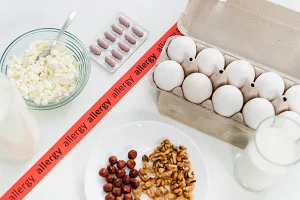As a food manufacturer, it is essential to ensure that your product meets regulatory standards, including the nutrition facts label requirements. In Canada, the Nutrition Facts table (NFT) is a mandatory label that must be included on most pre-packaged food products. The NFT provides information about the nutrient content of the food, which can help consumers make informed choices about their dietary intake. In this article, we will discuss how to create a compliant nutrition fact label in Canada.
Identify the Mandatory Information to include in the NFT
To be compliant, the NFT must include the following information:
- Serving size: The amount of food that is typically consumed in one serving.
- Calories: The amount of energy provided by one serving of the food
- % Daily Value (%DV): A percentage that indicates how much of the recommended daily intake of each nutrient is provided by one serving of the food
- Nutrients: The amount of each nutrient (such as fat, sodium, and carbohydrates) provided by one serving of the food

Determine the Serving Size
The serving size is a crucial factor in determining the nutrient content of the food. It should be based on the amount of food typically consumed in one sitting. The serving size must be listed in both metric and imperial units.
Calculate the Nutrient Content
The nutrient content must be listed for each nutrient that is required by regulation. These include:
- Fat: Total fat, saturated fat, and trans fat
- Carbohydrates: Total carbohydrates, fibre, and sugars
- Protein
- Sodium
- Cholesterol
- Iron
- Calcium
- Potassium
It is essential to calculate the nutrient content accurately using laboratory analysis or nutrient databases.
Determine the %DV
The %DV is a tool used to help consumers make informed choices about their diet. It is based on the recommended daily intake of each nutrient and is expressed as a percentage of the daily value. The %DV must be calculated for the following nutrients:
- Fat: Total fat, saturated fat and trans fat combined
- Carbohydrates: Total carbohydrates, fibre, and sugars
- Protein
- Sodium
- Calcium
- Iron
- Potassium
Design the Nutrition Facts Table
The NFT must be presented in a specific format that includes the mandatory information discussed above. It must be located on the principal display panel of the food label and be easily readable.

Verify you’re Compliant
Once the NFT has been created, it is essential to verify that it meets regulatory requirements. This can be done through laboratory analysis or nutrient databases. It is also a good idea to seek guidance from regulatory bodies, such as Health Canada or the Canadian Food Inspection Agency.
In conclusion, creating a compliant nutrition facts label in Canada requires careful attention to detail and compliance with regulatory requirements. By following the steps outlined above, food manufacturers can ensure that their products meet these requirements and provide consumers with accurate and helpful information about the nutrient content of their food.
Does all this go over your head? Do you want to just focus on your food? Try MenuSano! We take care of all the calculations for you, and you can just cook your heart out. Start a Free Trial today!



















